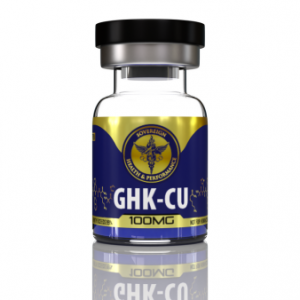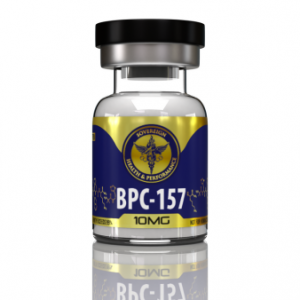Lyme Disease & Peptide Research: How Peptides Can Help
Lyme disease is caused by the bacterium Borrelia burgdorferi, transmitted to outdoor enthusiasts through the bite of an infected black-legged tick. Symptoms of Lyme disease vary widely depending on the stage of infection but can affect multiple systems within the body. In the early stage, Lyme disease typically presents with a characteristic rash called erythema migrans (EM), which resembles a bull’s-eye pattern. If untreated, the disease can spread, leading to flu-like symptoms, joint pain, muscle aches, neurological issues, and even cognitive problems such as brain fog. In its later stages, Lyme disease may lead to chronic complications, including severe arthritis and persistent neurological impairments.

The chronic nature of Lyme disease, particularly when undiagnosed or untreated, often results in prolonged inflammation, tissue damage, and impaired healing. These issues can be challenging to address using standard therapies, which is why researchers are exploring alternative treatment strategies, including peptides and growth hormone (GH) boosters.
Table of Contents
The Potential Role of Microdosing Semaglutide in Lyme Disease Symptom Management
Semaglutide, a glucagon-like peptide-1 (GLP-1) receptor agonist, is widely known for its role in regulating blood sugar and aiding in weight loss. However, its ability to modulate inflammatory pathways and offer neuroprotective benefits suggests potential in managing the symptoms of chronic diseases, including Lyme disease.
1. Anti-Inflammatory Effects
Chronic inflammation is a core feature of Lyme disease, contributing to joint pain, fatigue, and cognitive impairments. Studies have shown that GLP-1 receptor agonists, such as semaglutide, have the ability to reduce inflammatory markers like TNF-alpha and IL-6, which are frequently elevated in Lyme disease patients. By dampening inflammation, semaglutide may help alleviate some of the persistent symptoms that characterize chronic Lyme disease, particularly in the joints and the nervous system.
2. Neuroprotective Properties
One of the more debilitating symptoms of Lyme disease is the impact it has on the central nervous system, causing memory issues, cognitive dysfunction (brain fog), and neuropathy. Research has shown that semaglutide and other GLP-1 receptor agonists offer neuroprotective effects, reducing oxidative stress and enhancing neuronal survival. A study published in Nature Communications highlighted the potential of GLP-1 receptor activation to protect neurons in inflammatory disease models, suggesting that microdosing semaglutide could help reduce neurological symptoms in Lyme patients.
3. Metabolic Support and Energy Regulation
Fatigue is another major symptom of Lyme disease, often caused by the body’s struggle with chronic inflammation. By supporting energy regulation and improving metabolic function, semaglutide could help patients maintain energy levels and better cope with the exhaustion associated with the disease.

The Role of GH-Boosting Peptides like Ipamorelin in Lyme Disease Symptom Management
In addition to semaglutide, GH-boosting peptides such as Ipamorelin may offer complementary benefits for individuals with Lyme disease. Ipamorelin, a potent growth hormone secretagogue, stimulates the release of endogenous growth hormone, which plays a vital role in tissue repair, immune modulation, and energy balance.
1. Tissue Repair and Regeneration
Lyme disease often leads to damage in joints, muscles, and connective tissues. GH-boosting peptides like Ipamorelin stimulate the production of growth hormone, which enhances the body’s ability to repair damaged tissues. This can be particularly beneficial for Lyme patients suffering from chronic joint pain and muscle weakness. Growth hormone aids in collagen production, which is essential for the regeneration of tendons, ligaments, and cartilage.
2. Immune Modulation
Growth hormone also impacts the immune system by modulating inflammatory responses. Lyme disease triggers an overactive immune response, leading to chronic inflammation that worsens symptoms. Ipamorelin’s ability to enhance immune function and regulate inflammatory pathways may help reduce the severity of these responses, promoting faster recovery from flare-ups and improving overall symptom management.
3. Improved Energy Levels and Reduced Fatigue
Chronic fatigue is a debilitating symptom of Lyme disease. Ipamorelin, by promoting the release of growth hormone, may enhance energy metabolism and help counteract the persistent exhaustion associated with the condition. Improved sleep, better recovery, and enhanced metabolic function are among the potential benefits for patients with chronic fatigue due to Lyme disease.
4. Neuroprotection and Cognitive Support
Much like semaglutide, GH-boosting peptides may also have neuroprotective benefits. Growth hormone is known to support the health of neurons, protect against oxidative damage, and improve cognitive function. This is critical for Lyme disease patients who experience brain fog, memory loss, and other neurological symptoms.
Other Peptides for Lyme Disease: BPC-157, TB-500, and GHK-Cu
In addition to semaglutide and GH-boosting peptides like Ipamorelin, other peptides may offer further support for healing and recovery in Lyme disease patients.
1. BPC-157
BPC-157 (Body Protection Compound-157) is a synthetic peptide with strong regenerative properties. It has been shown to promote the healing of tendons, muscles, and joints, all of which are commonly affected by Lyme disease. BPC-157 also modulates inflammatory responses, helping to reduce joint pain and muscle stiffness. It accelerates tissue repair by promoting angiogenesis and collagen production, which are essential for healing damaged tissues.
2. TB-500 (Thymosin Beta-4)
TB-500 is known for its ability to promote tissue repair, enhance wound healing, and reduce inflammation. It plays a crucial role in promoting cell migration and blood vessel formation, which supports the regeneration of damaged tissues. For Lyme disease patients, TB-500’s immune-modulating properties may help control the excessive inflammation that often accompanies chronic infections.
3. GHK-Cu
GHK-Cu (Copper Peptide) is a naturally occurring peptide with anti-inflammatory and tissue-remodeling properties. It promotes healing by reducing oxidative stress and modulating inflammatory pathways. GHK-Cu may help repair tissues damaged by chronic inflammation, enhance collagen production, and reduce scarring, offering benefits for Lyme patients suffering from joint degeneration or persistent inflammation.
Conclusion
Microdosing semaglutide, along with GH-boosting peptides like Ipamorelin, BPC-157, TB-500, and GHK-Cu, offers promising therapeutic strategies for managing the long-term effects of Lyme disease. By addressing inflammation, promoting tissue repair, and supporting neuroprotection, these peptides may alleviate many of the chronic symptoms associated with the disease. While more clinical research is needed to confirm these benefits, the regenerative properties of these peptides position them as valuable adjuncts to traditional Lyme disease therapies.
-
 Thymosin B-4 (TB-4)$98.00
Thymosin B-4 (TB-4)$98.00 -
 GHK-Cu$69.00
GHK-Cu$69.00 -
 BPC-157$88.00
BPC-157$88.00
Supporting References
Semaglutide and Inflammation
Drucker, D. J. (2021). Mechanisms of Action and Therapeutic Application of Glucagon-like Peptide-1. Cell Metabolism, 33(4), 740–755.
During, M. J., Cao, L., Ziegler, M., et al. (2021). GLP-1 receptor agonists in neuroprotection: Mechanisms and therapeutic potential. Nature Communications, 12, 2716.
Ipamorelin and Tissue Regeneration
Giustina, A., & Veldhuis, J. D. (2020). Growth hormone-releasing peptides and their clinical applications. Endocrine Reviews, 41(3), 373–411.
BPC-157 and Tissue Healing
Sikiric, P., Seiwerth, S., Rucman, R., et al. (2018). BPC 157: From Gastric Peptide to Organoprotection. Current Pharmaceutical Design, 24(18), 1990-2003.
TB-500 and Immune Modulation
Li, C., Li, J., Li, J., et al. (2020). Thymosin Beta-4: A Multi-functional Regulatory Peptide with Implications in Immune Modulation and Tissue Regeneration. Frontiers in Immunology, 11, 556940.
GHK-Cu and Inflammation
Pickart, L., Margolina, A. (2020). GHK Peptide as a Natural Modulator of Multiple Cellular Pathways in Skin Regeneration. Oxidative Medicine and Cellular Longevity, 2020, Article ID 3238053.

